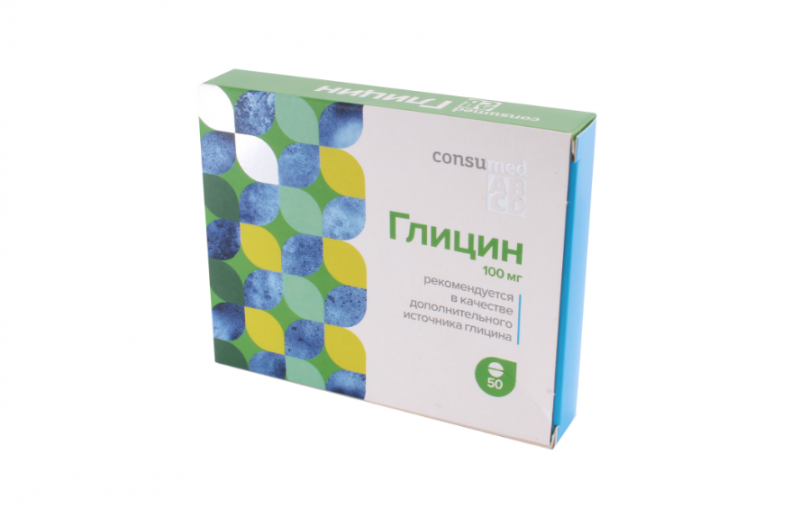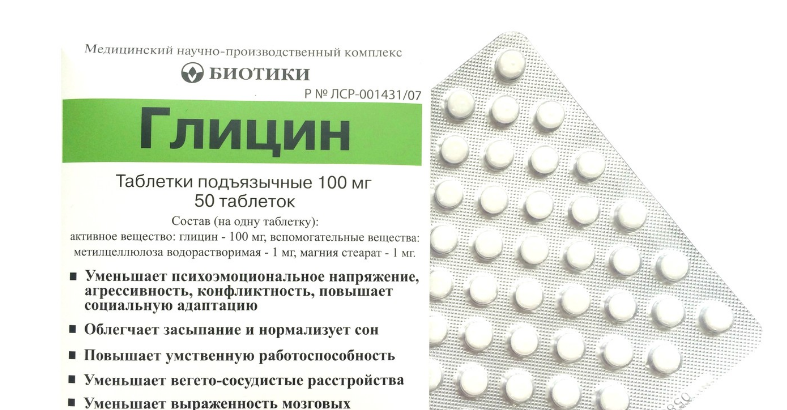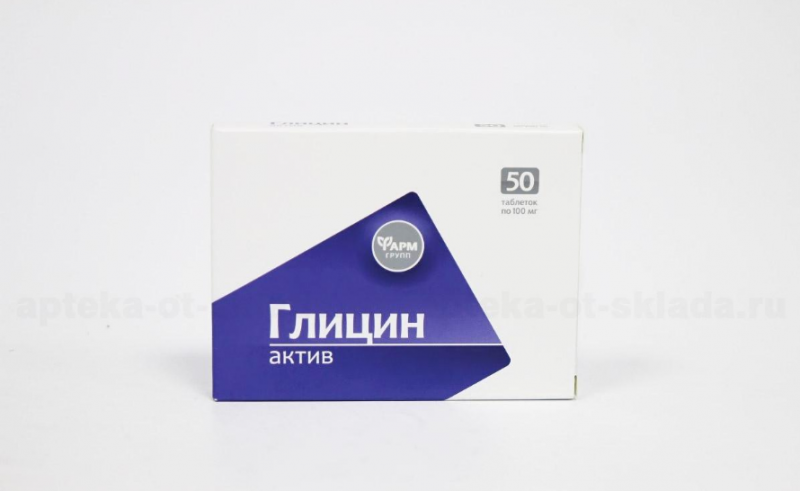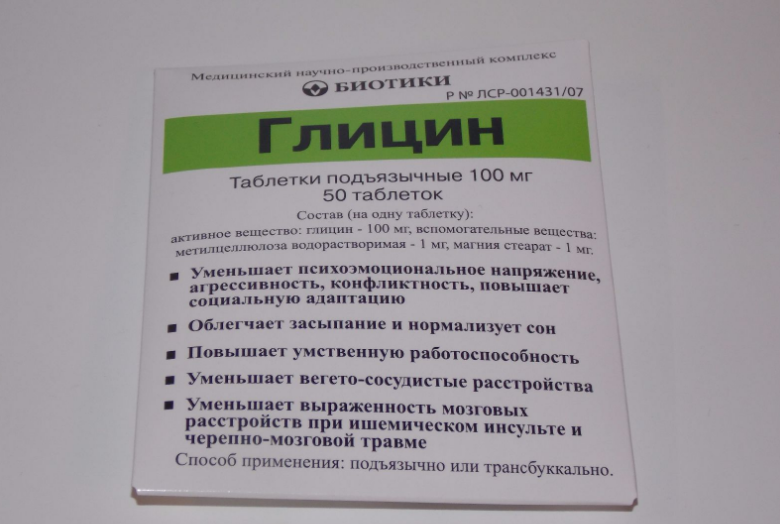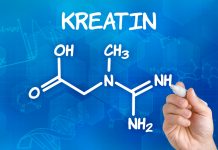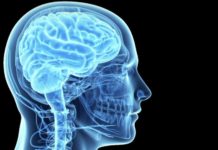“Glycine” is one of the safest nootropic drugs that can be given even to newborns to normalize brain activity during developmental delays and birth injuries. This medication deals with stress and agitation, hyperactivity and anxiety. Neurologists often prescribe "Glycine" to young children to reduce nervous tension and normalize sleep.
Material Content:
The composition of the drug
The active ingredient of the drug is microencapsulated glycine - aminoethanoic acid, a compound that positively affects brain metabolism. It serves as the basis for the molecules of amino acids and pigments, nucleotides and the neurotransmitter serotonin. In a healthy person, glycine is produced in the body, and it can also come with food.
The substance contains the following products:
- fish;
- eggs
- beef;
- nuts
- oats.
"Glycine" is available in tablet, capsule forms, in the form of powder and even chewing gum. In food production it is used as a sweetener.
The metabolic agent in the most popular form of sublingual tablets also contains auxiliary substances:
- E 461, or metocel - a dietary supplement in the form of a white powder. As a part of drugs, it acts as a thickener, is not absorbed in the digestive tract and is not absorbed, it is harmless.
- The salt of magnesium and stearic acid - a substance in the form of a colorless powder, acts as an emulsifier and stabilizer in the composition of medicines.May be harmful if consumed simultaneously with alcohol and energy drinks.
If nerve cells are damaged and glycine deficiency occurs in the body, it is possible to correct the deficiency of this amino acid by taking the drug.
A healthy person does not need auxiliary sources of this substance.
Age restrictions
Pediatricians advise children to take the drug for sleep disorders, tearfulness, increased irritability and in stressful situations. Worried parents often wonder at what age it is safe to give Glycine to a child. Many neurologists believe that the remedy is not able to harm, and therefore it is quite possible to begin treatment almost from the birth of the baby.
In an adequate dosage, “Glycine”, children are given as part of the treatment of neurological problems of newborns: tremors, rolling eyes, wincing. The tablet is crushed or immediately purchased in powder form, the dummy is moistened in breast milk or boiled water and the recommended amount is applied to it. The child is happy to suck the nipple, as the drug has a sweet taste.
Indications for use of glycine in children
Thanks to the amino acid contained in the composition, the drug produces a pronounced antitoxic effect. It normalizes the mechanism of inhibition in the nervous system, reduces the intensity of stress.
As a result, the patient has:
- the disappearance of insomnia and the normalization of the process of falling asleep;
- decreased aggressiveness and hyper-excitability;
- decrease in the intensity of symptoms of NDC;
- normalization of mood, the disappearance of tearfulness in children.
Neurologists prescribe the drug for babies in the event of the development of the following pathologies:
- impaired mental function;
- birth injuries;
- perinatal encephalopathy;
- increased intracranial pressure in the baby;
- muscle hypertonicity in infants;
- hyperactivity syndrome;
- stress due to stress;
- NDC according to the cardiac type;
- NDC according to the hypotonic type;
- deviant behavior of adolescents;
- decreased mental activity;
- violation of memorization processes;
- decreased physical stamina.
For children from 3 years of age, “Glycine” is recommended to be taken buccally in the dosages indicated in the instructions for use.
Instructions for taking and dosage for the child
The drug is taken sublingually before or after a meal.
Healthy children without serious damage to the central nervous system, neurologists prescribe the drug in a dosage of 100 mg in the form of tablets or powder three times a day. The course of therapy is from two to four weeks.
- For children under three years of age in the presence of neurological diseases, the drug is recommended to be taken two to three times a day, 50 mg or half a tablet for the first two weeks, then the drug is taken once a day. The duration of the course is determined by the attending physician.
- “Glycine” for children under one year of age is prescribed strictly according to indications, the neurologist observing the child calculates the dosage and duration of the course.
In Russian pharmacies, you can rarely find this medicine in the form of a powder. If only pills are available, there is no need to panic. The main thing is to thoroughly grind the product before giving it to the child, dipping a dummy in the powder, or placing the medicine on the mucous membrane of the baby’s mouth, first rubbing it in a small amount of boiled water or breast milk.
Drug interaction
The instructions for use of “Glycine” indicate that the drug makes the negative side effects of such medicines as less pronounced:
- tranquilizers;
- sleeping pills;
- antipsychotics;
- anticonvulsant drugs.
If the patient has low blood pressure, the dosage of "Glycine" is reviewed in the direction of reduction. In this case, it is necessary to control the indicators. If blood pressure continues to decline, the drug is canceled.
Metabolic analogues
There are several analogues of the drug that are similar to it in the mechanism of work in the body, but differ in the active substance and composition. They are also prescribed for children with increased irritability, stress, neurological disorders, insomnia, and VSD.
In some cases, "Glycine" can be replaced with the following medicines:
- "Biotredin";
- Piracetam
- Homeostres
- Cavinton
- Tenoten
- Lucetam
- Afobazol;
- NooCam;
- Nootropil.
Some of these drugs contribute to the normalization of brain activity, some produce calming, tranquilizing, restoring effects. It is impossible to replace the drug recommended by the doctor yourself, especially when it comes to the health of the child.



